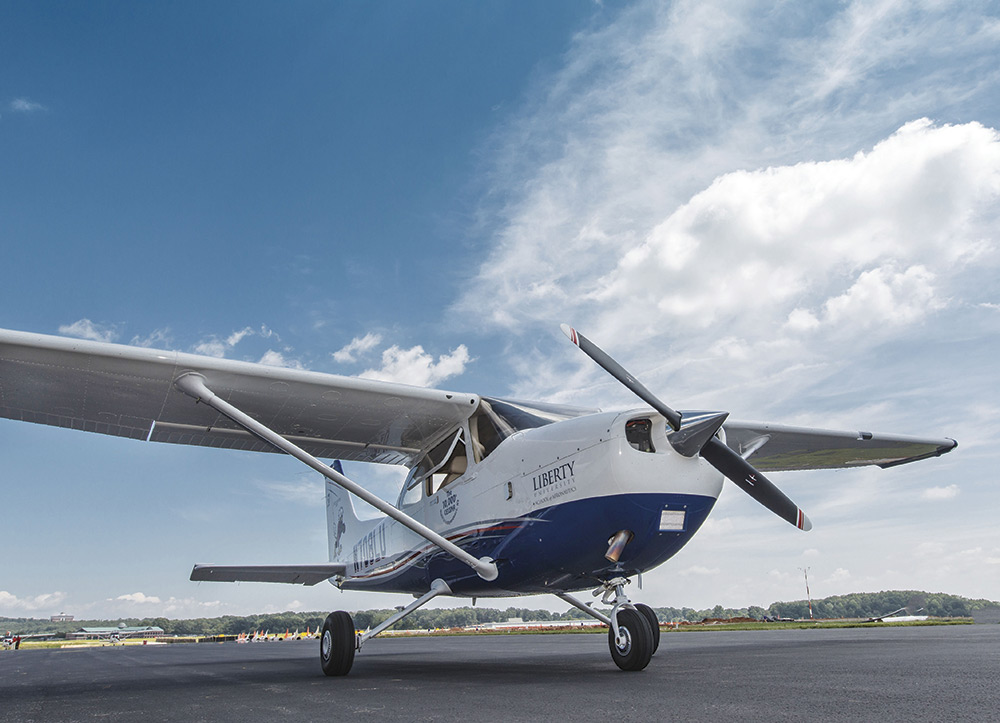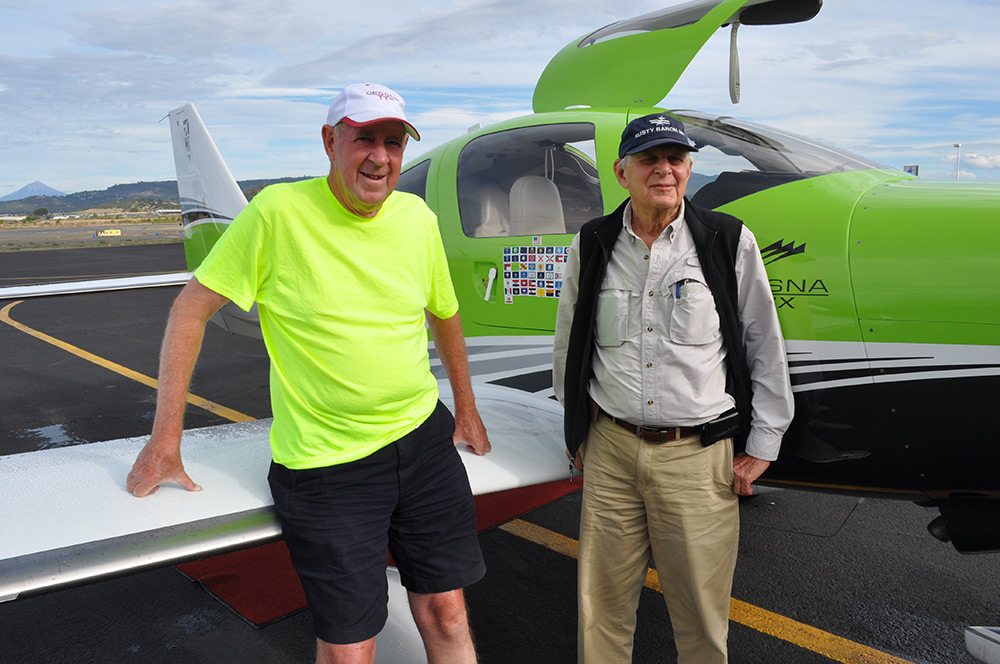Two top organizations explain why buying new aircraft is the best choice
The best flight training programs in the country combine knowledgeable, skilled instructors with state-of-the-art aircraft and equipment. New aircraft offer distinct advantages, including greater dispatch reliability and lower operating costs – making them the best tools for the mission and the best return on investment. Two top training programs explain why.
Liberty University – Lynchburg, Virginia
In 2002, Liberty University began formalizing and expanding its aviation program, starting with its own in-house flight instruction and ground school and acquiring its own equipment and aircraft. Today, the private university, located in Lynchburg, Virginia, owns and operates a fleet of more than 40 aircraft, 10 of which the school acquired in 2014. Of the newest models, eight are Cessna® Skyhawk® piston-engine aircraft.

Among the three new Cessna Skyhawk aircraft Liberty University took delivery of in August 2014, one represented an aviation milestone – the 10,000th single-engine aircraft manufactured in Textron Aviation’s Independence, Kansas facility.
The university's flight training program encompasses commercial and corporate flying, unmanned aerial systems, aircraft maintenance and military and missionary aviation. Almost 1,000 students are enrolled in the resident and online aviation programs, with more than 250 students involved in flight training. The Cessna Skyhawk aircraft are the school's primary training aircraft.
"There are several advantages to operating new aircraft in a training program. An obvious one is reliability. Newer aircraft generally require less unscheduled maintenance, which means they're available more for training," said Dave Young, Liberty University assistant provost for aeronautics education.
"Parts are more widely available. Having new aircraft means students become very familiar with the latest technology, equipment and avionics in their training. They are much more prepared to adapt to the aircraft used in their future jobs."
"Also, newer aircraft appeal to the students because of the new technology, which makes them a great recruiting tool. We host ‘college for a weekend’ events where prospective students visit the university. They attend class, live in the dorms, eat in the dining hall and fly in the airplanes and simulators. They like the new aircraft."
Benefits of New Aircraft for Pilot Training
 Reliability
Reliability Lower operating costs
Lower operating costs Parts availability
Parts availability Recruiting tool
Recruiting tool Warranty
Warranty Latest technology
Latest technology Robust service
Robust service
Liberty University competes every year in the Air Race Classic, an all-female air race, and the National Intercollegiate Flying Association Competition, in which the school placed among the top five in the nation in 2014 and garnered the top pilot award. These and other events showcase the program and help recruit students to the school’s aviation program.
"Having new airplanes with our own paint scheme, logos and N-numbers demonstrates the quality of our program and our commitment to giving students the best possible training experience," Young said.
West Coast Adventures – Medford, Oregon
From Alaska to the Rocky Mountains to Idaho’s backcountry, veteran flight instructor Field Morey takes student pilots on real-life flying adventures. At West Coast Adventures in Medford, Oregon, Morey teaches primary, IFR and cross-country flight training, but with a twist – an exciting experience filled with stormy weather, low ceilings and snowy conditions in some of the most beautiful places in the United States.
"Instead of flying around their local airport with a hood on for 40 hours, I take them on an adventure trip. They see real weather and learn how it feels to navigate and handle it," Morey, an FAA examiner for 38 years, said.
As part of his focus on state-of-the-art training with state-of-the-art equipment, Morey acquired a new Cessna Skylane® and Cessna TTx™.

Capital Air Tour pilots Field Morey and Conrad Teitell pose next to the Cessna TTx that took them to 49 states in just two weeks.
"I'm a big believer in offering quality instruction in a quality airplane. New aircraft offer greater technology – from weather, terrain and traffic avoidance to sophisticated autopilots and glass cockpits," said Morey. He's logged more than 35,000 flight hours, two-thirds of which have been instructional.
"At West Coast Adventures, pilots train on the most modern, up-to-date equipment, so when they do buy a new airplane from Cessna or Beechcraft, they know how to operate it from day one," he said.
Flight training has been part of the family business since 1942 when Morey's father began teaching pilots in Madison, Wisconsin, during the war. Morey, who took over his father's business for nearly four decades, left the operation to his son and daughter in 2003 and headed west.
"I came to Oregon to be closer to the mountains. I love the mountain training. I love the Alaska trips because they provide the weather that my students need to experience. And, in Idaho's backcountry, I can teach takeoffs and landings on very short fields."
Morey's Cessna Skylane is equipped with a Garmin™ G1000™, and his Cessna TTx is equipped with the Garmin G2000™ – avionics platforms that are similar to the Citation® Mustang®, an advantage for pilots wanting to step up to the jet.
Videos and stories contained in this site may contain information that while accurate at the time of publication, has since been updated. Please connect with a representative for any questions.